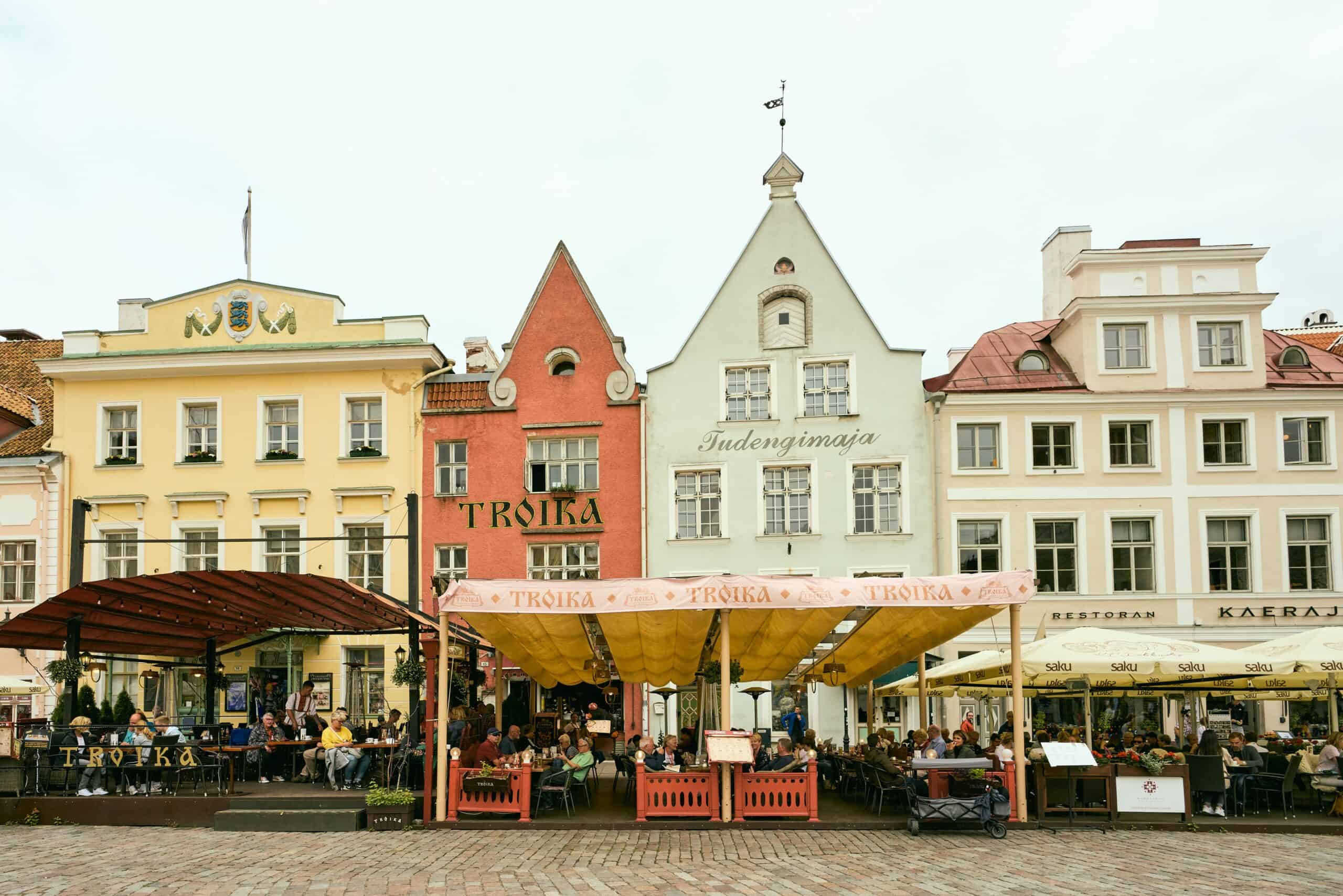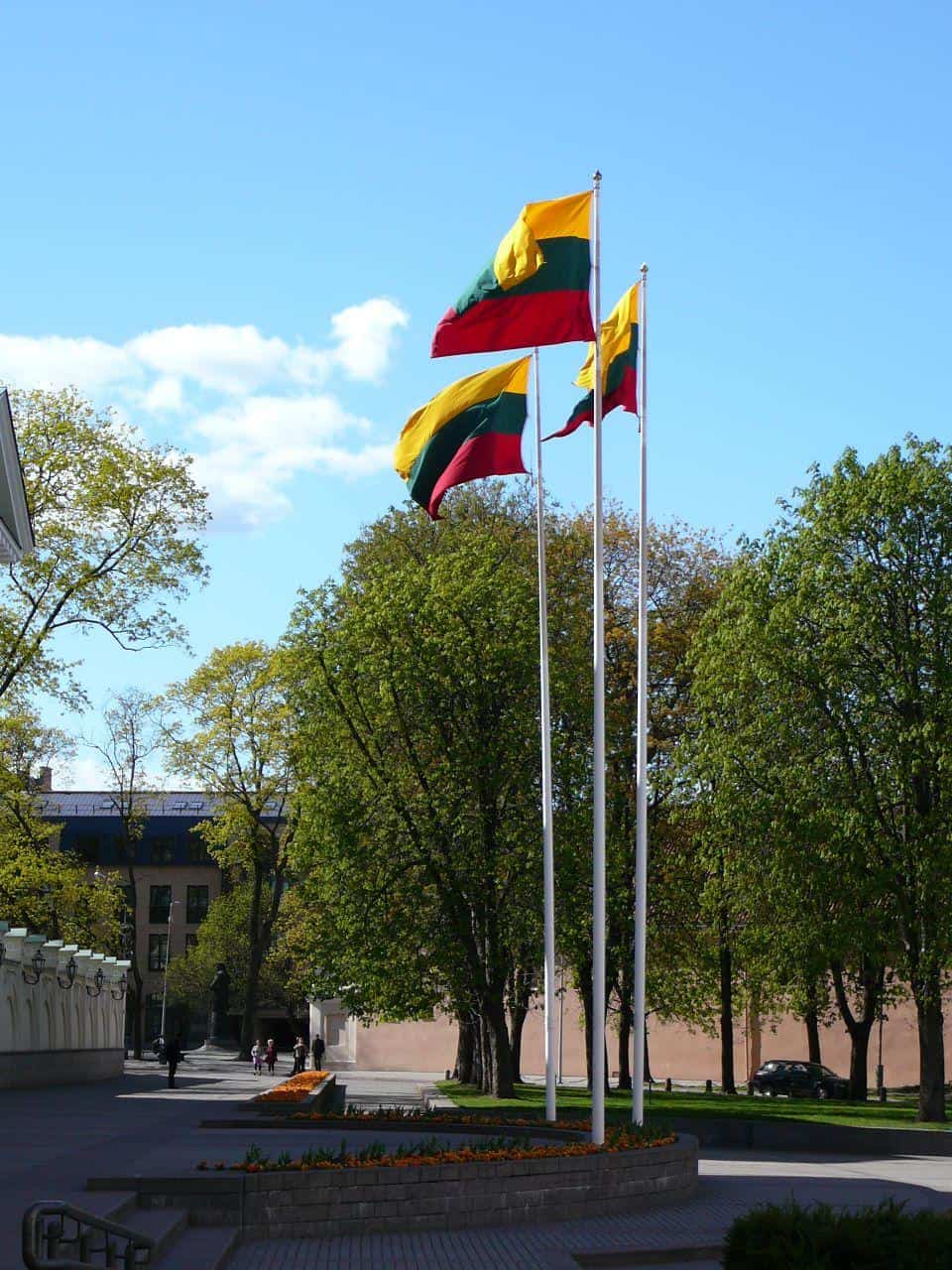
The global population has aged considerably in recent decades. Between 1960 and 2022, the share of people 65 and older worldwide doubled from 5% to 10%, according to the World Bank. While the increase is partially attributable to improved living standards and advances in medicine, it is also a product of falling birth rates. On average, women are now having half as many children in their lifetimes as they were in the 1960s. Partially as a result, many countries now face a looming crisis.
An aging population can have far-reaching social and economic consequences. As populations age and workers retire, there are fewer young people to fill job openings. Fewer workers also means fewer people paying taxes that fund social safety net programs. As revenue for public pension and health care programs decline, a growing retired population will mean greater demand for their benefits and services.
According to data from the CIA’s World Factbook, the median age in a typical country is 31.5 years. But in dozens of countries around the world, over half of the population are well over 40 years old.
Using CIA data for the latest available year, 24/7 Wall St. identified the oldest countries on Earth. We reviewed the median age in 193 countries and ranked the 30 with the oldest populations. All supplemental data is from the World Bank and is also for the most recent available year.
Among the countries on this list, the age of a typical resident ranges from 42.8 years to nearly 57 years. The countries on this list are almost all in Europe, and most are highly-developed and relatively wealthy. In all but three countries on this list, GDP per capita exceeds the $12,688 global average. (Here is a look at the countries with the most millionaires per capita.)
For a country to maintain a steady population size — immigration notwithstanding — the average fertility rate should stand at around 2.1 children per woman. In every country on this list with available data, fertility rates are below that threshold. In these countries, low birth rates have given way to a disproportionately large, and growing, retirement age population. (Here is a look at the countries with devastatingly low birth rates.)
Globally, the old age dependency ratio, or the number of residents aged 65 and up for every 100 working age residents, stands at 15 per 100. Among the countries on this list, the old age dependency ratio ranges from about 21 per 100, up to over 70 per 100.
Why It Matters

Demographic trends, like an aging population, can have far-reaching consequences. In any given country, more older residents can mean fewer people to fill essential jobs, and fewer workers to support a growing number of retirees. The problem is expected to get worse before it gets better. According to U.N. estimates, there were 727 million people aged 65 or older in 2020, a number that is expected to more than double by mid-century.
30. Slovakia
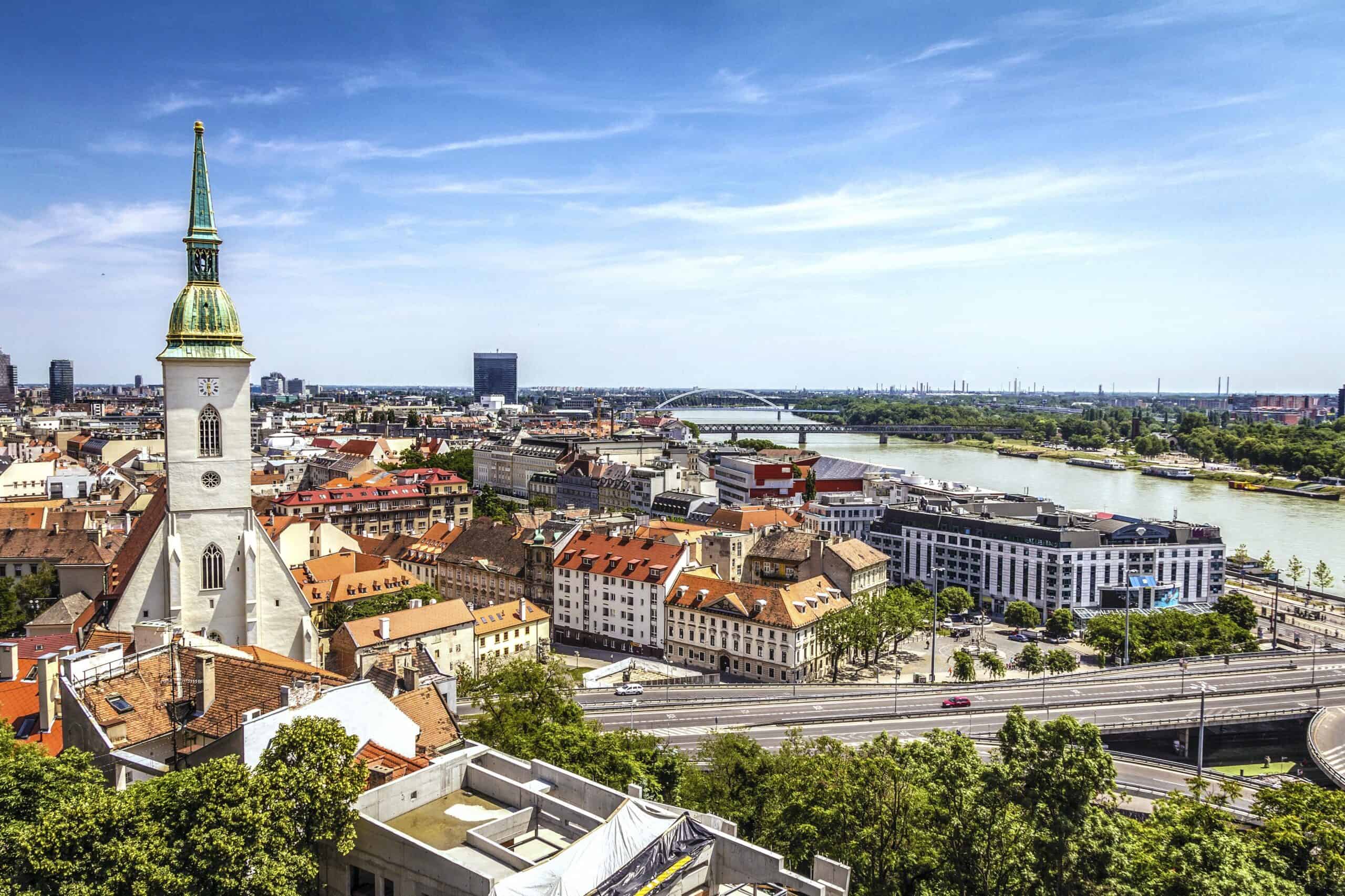
- Median age in 2024: 42.8 years
- Old-age dependency ratio: 25.2 people age 65+ per 100 working age people
- Fertility rate in 2021: Avg. of 1.6 children per woman over lifetime
- 1-yr. population change, 2021-2022: -0.3% (-15,495 people)
- 10-yr. population change, 2013-2022: +0.3% (+18,359 people)
- Total population in 2022: 5,431,752
- GDP in 2022: $115.5 billion ($21,257 per capita)
- Region: Europe
29. Poland
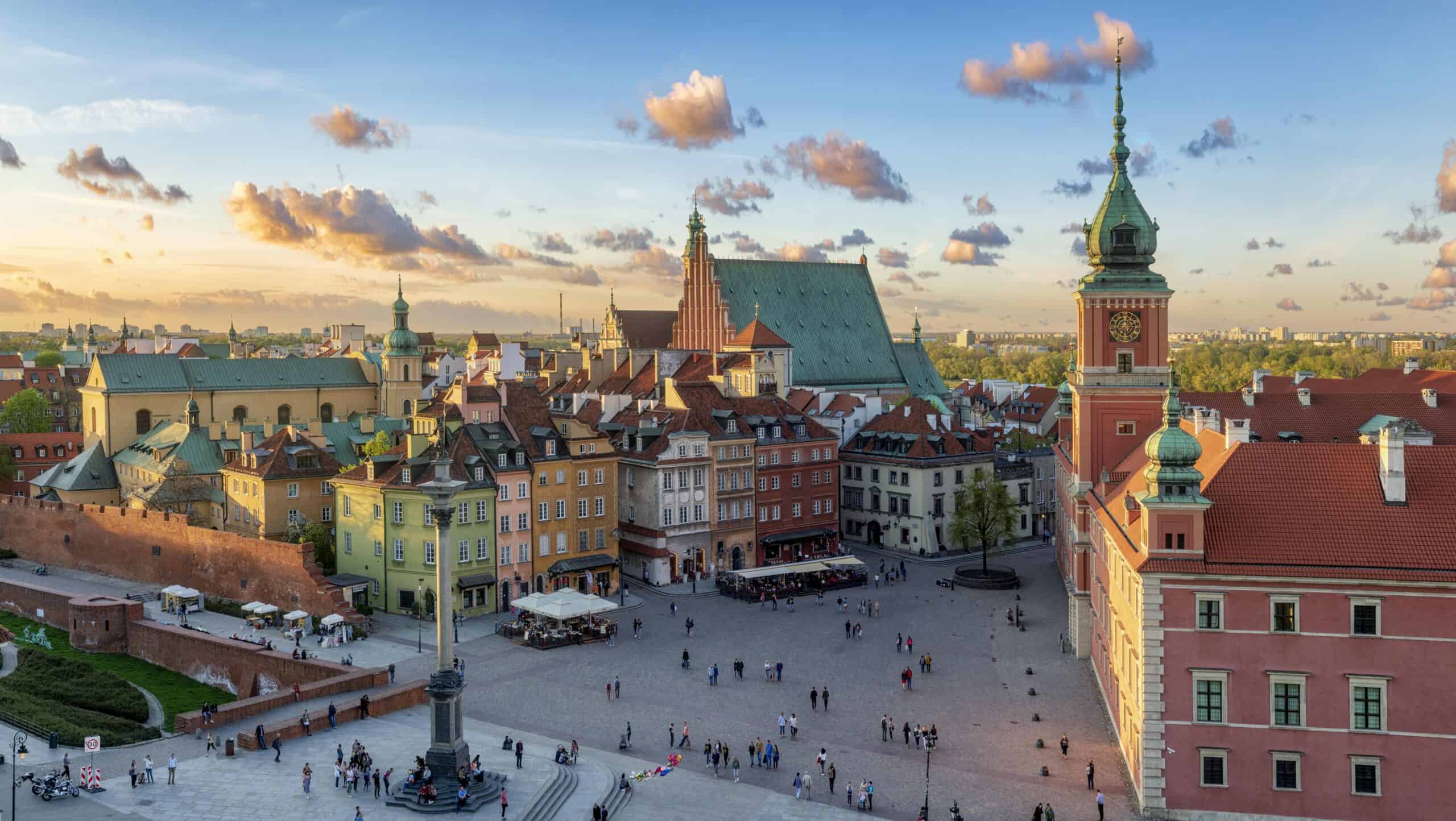
- Median age in 2024: 42.9 years
- Old-age dependency ratio: 28.0 people age 65+ per 100 working age people
- Fertility rate in 2021: Avg. of 1.3 children per woman over lifetime
- 1-yr. population change, 2021-2022: -2.5% (-925,375 people)
- 10-yr. population change, 2013-2022: -3.2% (-1,218,447 people)
- Total population in 2022: 36,821,749
- GDP in 2022: $688.1 billion ($18,688 per capita)
- Region: Europe
28. Finland
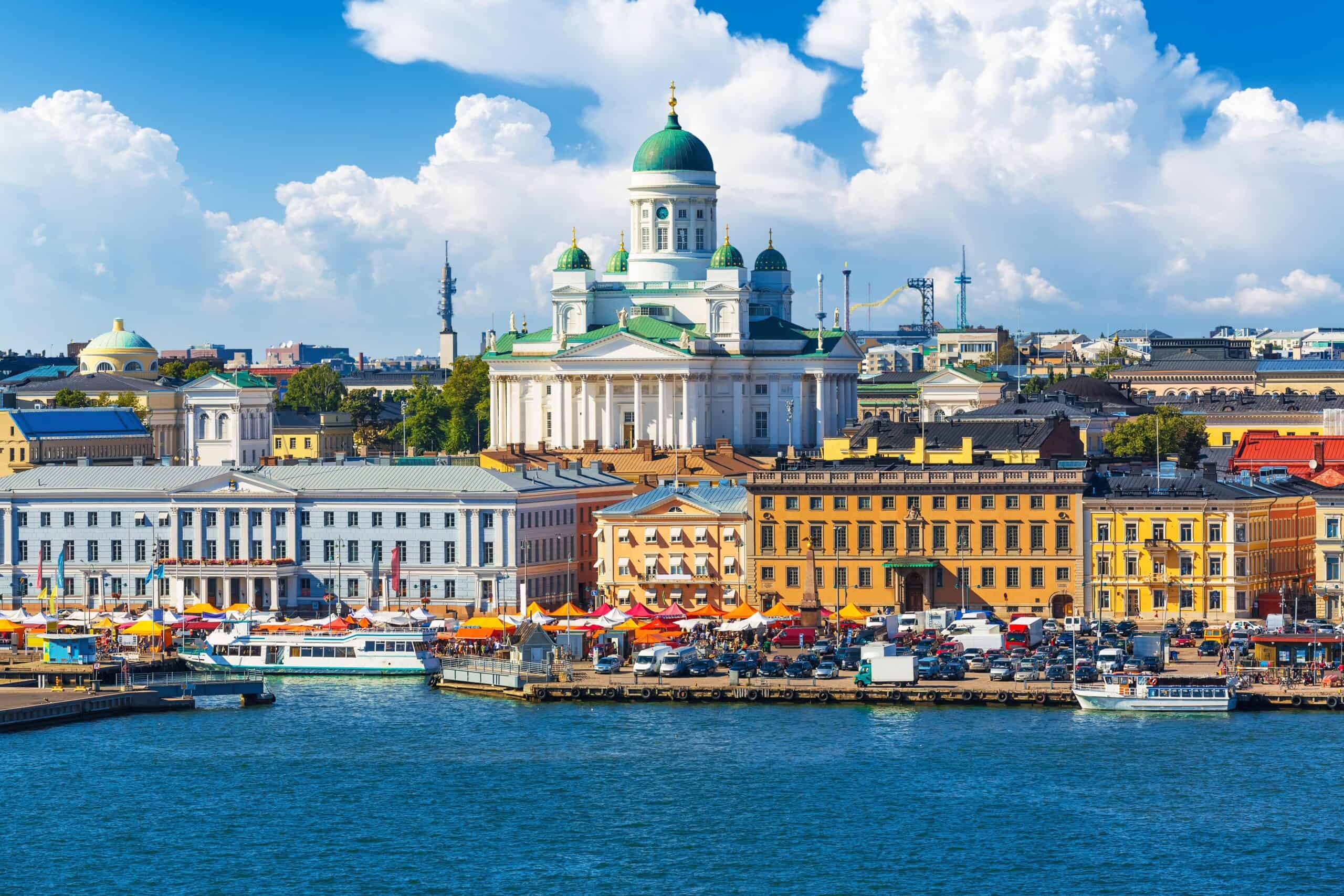
- Median age in 2024: 43.3 years
- Old-age dependency ratio: 37.8 people age 65+ per 100 working age people
- Fertility rate in 2021: Avg. of 1.5 children per woman over lifetime
- 1-yr. population change, 2021-2022: +0.3% (+15,089 people)
- 10-yr. population change, 2013-2022: +2.2% (+117,134 people)
- Total population in 2022: 5,556,106
- GDP in 2022: $282.6 billion ($50,872 per capita)
- Region: Europe
27. Malta

- Median age in 2024: 43.5 years
- Old-age dependency ratio: 28.2 people age 65+ per 100 working age people
- Fertility rate in 2021: Avg. of 1.1 children per woman over lifetime
- 1-yr. population change, 2021-2022: +2.4% (+12,577 people)
- 10-yr. population change, 2013-2022: +24.7% (+105,146 people)
- Total population in 2022: 531,113
- GDP in 2022: $18.1 billion ($34,128 per capita)
- Region: Europe
26. Serbia

- Median age in 2024: 43.9 years
- Old-age dependency ratio: 31.6 people age 65+ per 100 working age people
- Fertility rate in 2021: Avg. of 1.5 children per woman over lifetime
- 1-yr. population change, 2021-2022: -2.5% (-169,877 people)
- 10-yr. population change, 2013-2022: -7.0% (-499,683 people)
- Total population in 2022: 6,664,449
- GDP in 2022: $63.6 billion ($9,538 per capita)
- Region: Europe
25. Switzerland

- Median age in 2024: 44.2 years
- Old-age dependency ratio: 29.4 people age 65+ per 100 working age people
- Fertility rate in 2021: Avg. of 1.5 children per woman over lifetime
- 1-yr. population change, 2021-2022: +0.8% (+71,214 people)
- 10-yr. population change, 2013-2022: +8.5% (+686,414 people)
- Total population in 2022: 8,775,760
- GDP in 2022: $818.4 billion ($93,260 per capita)
- Region: Europe
24. Czechia

- Median age in 2024: 44.2 years
- Old-age dependency ratio: 32.6 people age 65+ per 100 working age people
- Fertility rate in 2021: Avg. of 1.8 children per woman over lifetime
- 1-yr. population change, 2021-2022: +1.6% (+166,346 people)
- 10-yr. population change, 2013-2022: +1.5% (+157,846 people)
- Total population in 2022: 10,672,118
- GDP in 2022: $290.6 billion ($27,227 per capita)
- Region: Europe
23. Liechtenstein
- Median age in 2024: 44.2 years
- Old-age dependency ratio: 29.3 people age 65+ per 100 working age people
- Fertility rate in 2021: Avg. of 1.5 children per woman over lifetime
- 1-yr. population change, 2021-2022: +0.7% (+288 people)
- 10-yr. population change, 2013-2022: +6.8% (+2,521 people)
- Total population in 2022: 39,327
- GDP in 2021: $7.7 billion ($197,505 per capita)
- Region: Europe
22. Taiwan

- Median age in 2024: 44.6 years
- Old-age dependency ratio: N/A
- Fertility rate in 2021: N/A
- 1-yr. population change, 2021-2022: N/A
- 10-yr. population change, 2013-2022: N/A
- Total population in 2022: N/A
- GDP: N/A
- Region: East and Southeast Asia
21. Bosnia and Herzegovina

- Median age in 2024: 44.8 years
- Old-age dependency ratio: 27.6 people age 65+ per 100 working age people
- Fertility rate in 2021: Avg. of 1.4 children per woman over lifetime
- 1-yr. population change, 2021-2022: -1.1% (-37,417 people)
- 10-yr. population change, 2013-2022: -10.6% (-384,033 people)
- Total population in 2022: 3,233,526
- GDP in 2022: $24.5 billion ($7,569 per capita)
- Region: Europe
20. Hungary

- Median age in 2024: 44.8 years
- Old-age dependency ratio: 30.5 people age 65+ per 100 working age people
- Fertility rate in 2021: Avg. of 1.6 children per woman over lifetime
- 1-yr. population change, 2021-2022: -0.7% (-66,843 people)
- 10-yr. population change, 2013-2022: -2.5% (-250,034 people)
- Total population in 2022: 9,643,048
- GDP in 2022: $177.3 billion ($18,390 per capita)
- Region: Europe
19. Ukraine

- Median age in 2024: 44.9 years
- Old-age dependency ratio: 28.6 people age 65+ per 100 working age people
- Fertility rate in 2021: Avg. of 1.2 children per woman over lifetime
- 1-yr. population change, 2021-2022: -13.3% (-5,822,901 people)
- 10-yr. population change, 2013-2022: -16.5% (-7,489,648 people)
- Total population in 2022: 38,000,000
- GDP in 2022: $160.5 billion ($4,534 per capita)
- Region: Europe
18. Austria

- Median age in 2024: 44.9 years
- Old-age dependency ratio: 30.1 people age 65+ per 100 working age people
- Fertility rate in 2021: Avg. of 1.5 children per woman over lifetime
- 1-yr. population change, 2021-2022: +1.0% (+86,054 people)
- 10-yr. population change, 2013-2022: +6.6% (+562,028 people)
- Total population in 2022: 9,041,851
- GDP in 2022: $470.9 billion ($52,085 per capita)
- Region: Europe
17. Estonia
- Median age in 2024: 45.0 years
- Old-age dependency ratio: 32.7 people age 65+ per 100 working age people
- Fertility rate in 2021: Avg. of 1.6 children per woman over lifetime
- 1-yr. population change, 2021-2022: +1.3% (+17,908 people)
- 10-yr. population change, 2013-2022: +2.3% (+30,843 people)
- Total population in 2022: 1,348,840
- GDP in 2022: $38.1 billion ($28,247 per capita)
- Region: Europe
16. Croatia

- Median age in 2024: 45.1 years
- Old-age dependency ratio: 35.2 people age 65+ per 100 working age people
- Fertility rate in 2021: Avg. of 1.6 children per woman over lifetime
- 1-yr. population change, 2021-2022: -0.6% (-23,400 people)
- 10-yr. population change, 2013-2022: -9.4% (-400,089 people)
- Total population in 2022: 3,855,600
- GDP in 2022: $71.6 billion ($18,570 per capita)
- Region: Europe
15. Bulgaria

- Median age in 2024: 45.1 years
- Old-age dependency ratio: 35.2 people age 65+ per 100 working age people
- Fertility rate in 2021: Avg. of 1.6 children per woman over lifetime
- 1-yr. population change, 2021-2022: -6.0% (-412,646 people)
- 10-yr. population change, 2013-2022: -11.0% (-800,018 people)
- Total population in 2022: 6,465,097
- GDP in 2022: $90.3 billion ($13,974 per capita)
- Region: Europe
14. Lithuania
- Median age in 2024: 45.1 years
- Old-age dependency ratio: 32.6 people age 65+ per 100 working age people
- Fertility rate in 2021: Avg. of 1.3 children per woman over lifetime
- 1-yr. population change, 2021-2022: +1.1% (+30,800 people)
- 10-yr. population change, 2013-2022: -4.3% (-126,050 people)
- Total population in 2022: 2,831,639
- GDP in 2022: $71.0 billion ($25,065 per capita)
- Region: Europe
13. Latvia
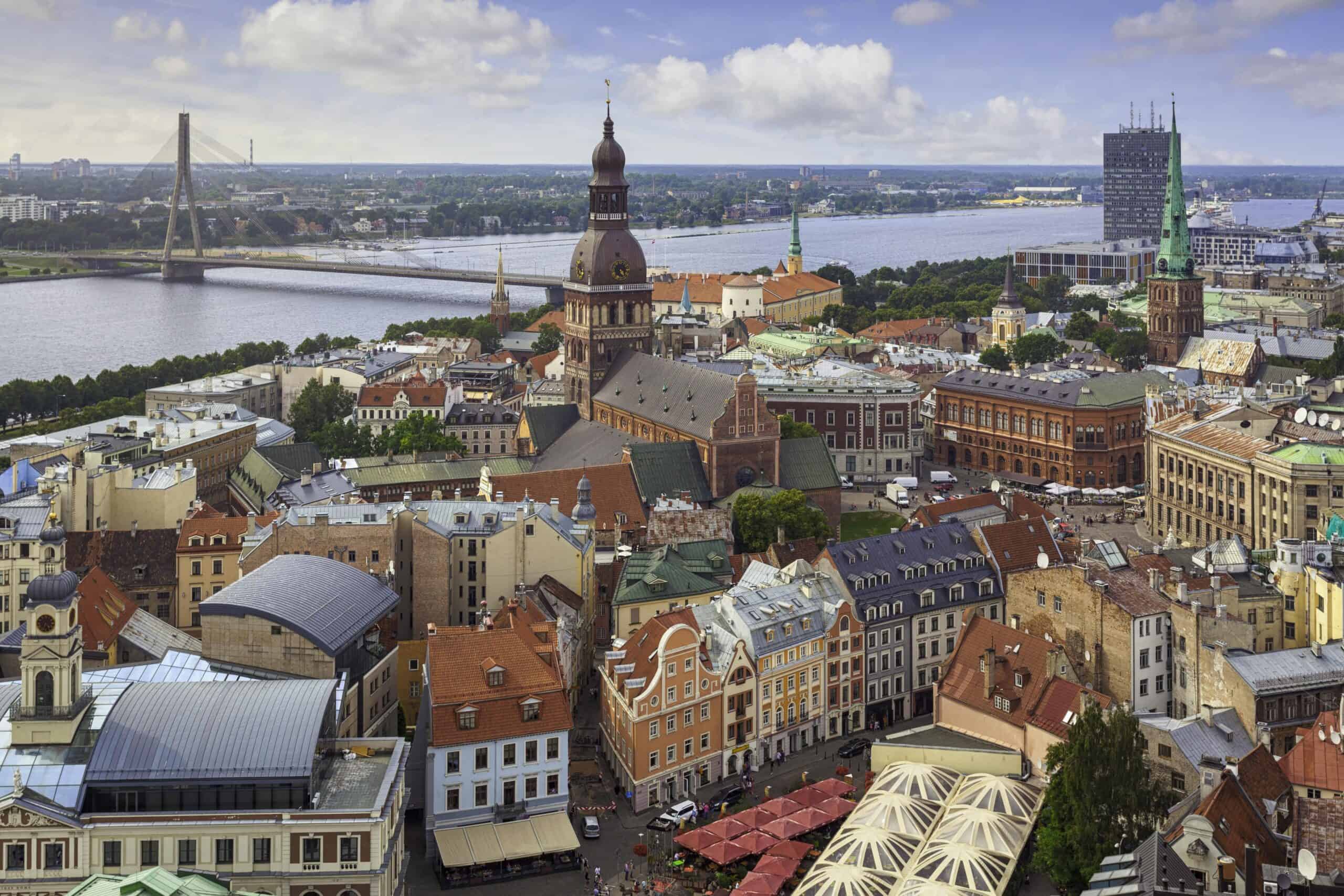
- Median age in 2024: 45.5 years
- Old-age dependency ratio: 34.9 people age 65+ per 100 working age people
- Fertility rate in 2021: Avg. of 1.6 children per woman over lifetime
- 1-yr. population change, 2021-2022: -0.3% (-5,107 people)
- 10-yr. population change, 2013-2022: -6.6% (-133,264 people)
- Total population in 2022: 1,879,383
- GDP in 2022: $40.9 billion ($21,780 per capita)
- Region: Europe
12. Romania
- Median age in 2024: 45.5 years
- Old-age dependency ratio: 28.5 people age 65+ per 100 working age people
- Fertility rate in 2021: Avg. of 1.8 children per woman over lifetime
- 1-yr. population change, 2021-2022: -0.4% (-75,050 people)
- 10-yr. population change, 2013-2022: -4.7% (-936,684 people)
- Total population in 2022: 19,047,009
- GDP in 2022: $300.7 billion ($15,787 per capita)
- Region: Europe
11. South Korea

- Median age in 2024: 45.5 years
- Old-age dependency ratio: 24.7 people age 65+ per 100 working age people
- Fertility rate in 2021: Avg. of 0.8 children per woman over lifetime
- 1-yr. population change, 2021-2022: -0.2% (-116,759 people)
- 10-yr. population change, 2013-2022: +2.4% (+1,199,224 people)
- Total population in 2022: 51,628,117
- GDP in 2022: $1.7 trillion ($32,423 per capita)
- Region: East and Southeast Asia
10. San Marino

- Median age in 2024: 46.1 years
- Old-age dependency ratio: 30.6 people age 65+ per 100 working age people
- Fertility rate in 2021: Avg. of 0.0 children per woman over lifetime
- 1-yr. population change, 2021-2022: -0.3% (-85 people)
- 10-yr. population change, 2013-2022: +1.1% (+375 people)
- Total population in 2022: 33,660
- GDP in 2021: $1.9 billion ($54,982 per capita)
- Region: Europe
9. Slovenia

- Median age in 2024: 46.3 years
- Old-age dependency ratio: 32.8 people age 65+ per 100 working age people
- Fertility rate in 2021: Avg. of 1.6 children per woman over lifetime
- 1-yr. population change, 2021-2022: +0.2% (+3,907 people)
- 10-yr. population change, 2013-2022: +2.5% (+52,033 people)
- Total population in 2022: 2,111,986
- GDP in 2022: $60.1 billion ($28,439 per capita)
- Region: Europe
8. Portugal

- Median age in 2024: 46.4 years
- Old-age dependency ratio: 35.8 people age 65+ per 100 working age people
- Fertility rate in 2021: Avg. of 1.4 children per woman over lifetime
- 1-yr. population change, 2021-2022: +0.5% (+47,873 people)
- 10-yr. population change, 2013-2022: -0.5% (-47,591 people)
- Total population in 2022: 10,409,704
- GDP in 2022: $255.2 billion ($24,515 per capita)
- Region: Europe
7. Greece

- Median age in 2024: 46.5 years
- Old-age dependency ratio: 36.0 people age 65+ per 100 working age people
- Fertility rate in 2021: Avg. of 1.4 children per woman over lifetime
- 1-yr. population change, 2021-2022: -1.3% (-142,288 people)
- 10-yr. population change, 2013-2022: -4.9% (-538,292 people)
- Total population in 2022: 10,426,919
- GDP in 2022: $217.6 billion ($20,867 per capita)
- Region: Europe
6. Germany

- Median age in 2024: 46.8 years
- Old-age dependency ratio: 35.2 people age 65+ per 100 working age people
- Fertility rate in 2021: Avg. of 1.6 children per woman over lifetime
- 1-yr. population change, 2021-2022: +0.7% (+601,907 people)
- 10-yr. population change, 2013-2022: +3.9% (+3,152,380 people)
- Total population in 2022: 83,797,985
- GDP in 2022: $4.1 trillion ($48,718 per capita)
- Region: Europe
5. Spain

- Median age in 2024: 46.8 years
- Old-age dependency ratio: 30.7 people age 65+ per 100 working age people
- Fertility rate in 2021: Avg. of 1.2 children per woman over lifetime
- 1-yr. population change, 2021-2022: +0.8% (+362,546 people)
- 10-yr. population change, 2013-2022: +2.5% (+1,158,295 people)
- Total population in 2022: 47,778,340
- GDP in 2022: $1.4 trillion ($29,675 per capita)
- Region: Europe
4. Italy

- Median age in 2024: 48.4 years
- Old-age dependency ratio: 37.9 people age 65+ per 100 working age people
- Fertility rate in 2021: Avg. of 1.3 children per woman over lifetime
- 1-yr. population change, 2021-2022: -0.3% (-192,748 people)
- 10-yr. population change, 2013-2022: -2.1% (-1,293,523 people)
- Total population in 2022: 58,940,425
- GDP in 2022: $2.0 trillion ($34,776 per capita)
- Region: Europe
3. Andorra

- Median age in 2024: 48.8 years
- Old-age dependency ratio: 20.7 people age 65+ per 100 working age people
- Fertility rate in 2021: Avg. of 0.0 children per woman over lifetime
- 1-yr. population change, 2021-2022: +1.0% (+790 people)
- 10-yr. population change, 2013-2022: +11.9% (+8,457 people)
- Total population in 2022: 79,824
- GDP in 2022: $3.4 billion ($41,993 per capita)
- Region: Europe
2. Japan

- Median age in 2024: 49.9 years
- Old-age dependency ratio: 51.2 people age 65+ per 100 working age people
- Fertility rate in 2021: Avg. of 1.3 children per woman over lifetime
- 1-yr. population change, 2021-2022: -0.4% (-556,604 people)
- 10-yr. population change, 2013-2022: -1.8% (-2,320,011 people)
- Total population in 2022: 125,124,989
- GDP in 2022: $4.3 trillion ($34,017 per capita)
- Region: East and Southeast Asia
1. Monaco

- Median age in 2024: 56.9 years
- Old-age dependency ratio: 70.4 people age 65+ per 100 working age people
- Fertility rate in 2021: N/A
- 1-yr. population change, 2021-2022: -0.6% (-217 people)
- 10-yr. population change, 2013-2022: +2.9% (+1,044 people)
- Total population in 2022: 36,469
- GDP in 2022: $8.8 billion ($240,862 per capita)
- Region: Europe
Are You Ahead, or Behind on Retirement? (sponsor)
If you’re one of the over 4 Million Americans set to retire this year, you may want to pay attention.
Finding a financial advisor who puts your interest first can be the difference between a rich retirement and barely getting by, and today it’s easier than ever. SmartAsset’s free tool matches you with up to three fiduciary financial advisors that serve your area in minutes. Each advisor has been carefully vetted, and must act in your best interests. Start your search now.
Don’t waste another minute; get started right here and help your retirement dreams become a retirement reality.
Thank you for reading! Have some feedback for us?
Contact the 24/7 Wall St. editorial team.

